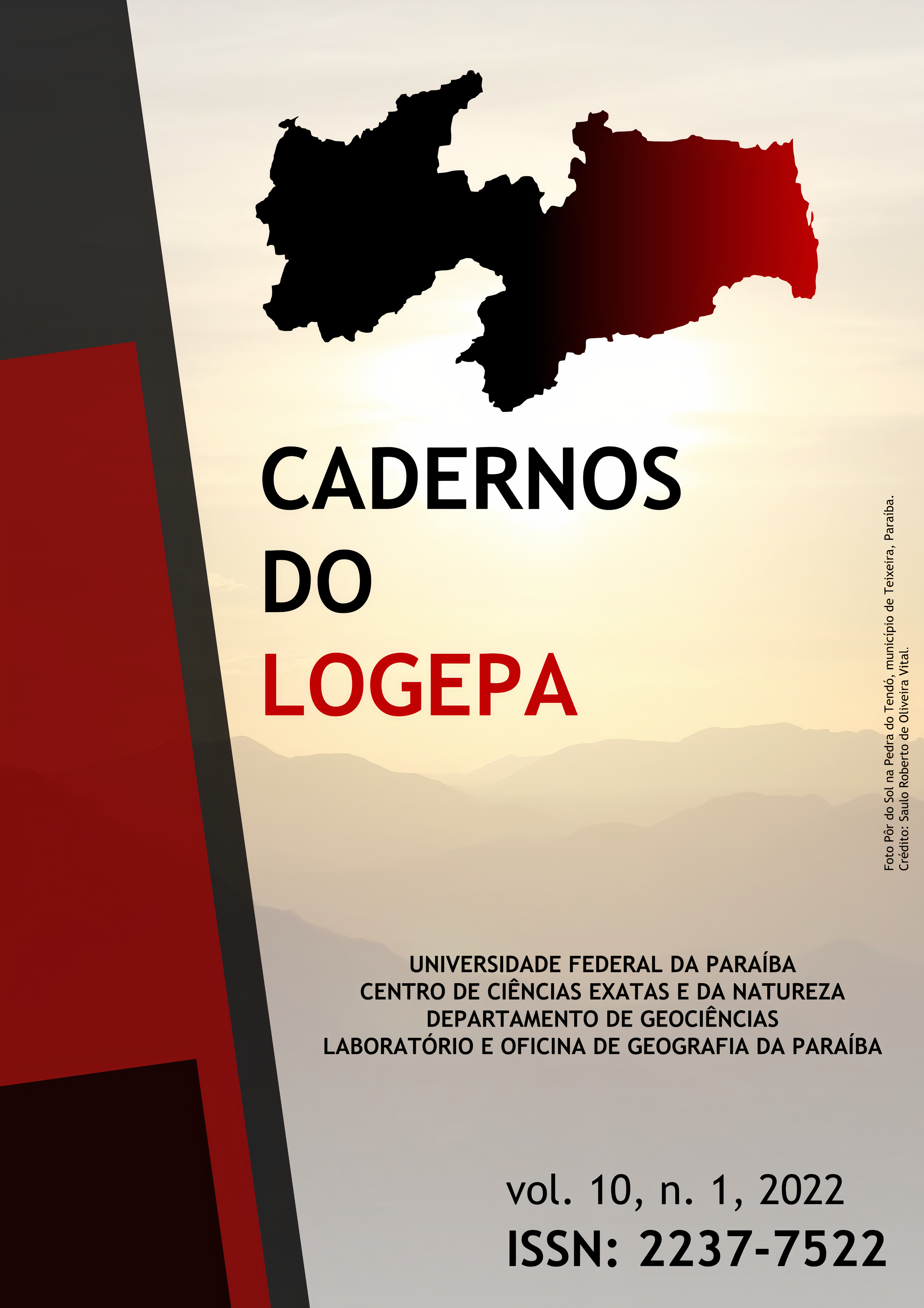MAPEAMENTO DA SUSCETIBILIDADE A MOVIMENTOS DE MASSA NO ESTADO DE ALAGOAS, BRASIL
DOI:
https://doi.org/10.22478/ufpb.2237-7522.2022v10n1.61458Resumo
Movimentos de massa são processos que fazem com que as rochas e materiais inconsolidados se movam por encosta abaixo pela ação gravitacional. No presente artigo objetivou-se mapear as áreas suscetíveis a movimentos de massas para o estado de Alagoas, propondo uma análise multicritério de suas variáveis físicas e morfométricas a partir do uso do Processo Analítico Hierárquico - AHP. Para isso, foi elaborado o mapeamento destas variáveis, que consistiu na elaboração de quatro produtos: declividade, pedologia, vegetação e precipitação. Para a realização da análise multicritério e álgebra dos mapas, foi realizada uma matriz de ponderação hierárquica para cada variável analisada. Posteriormente, os mapas foram combinados e interpolados, gerando a carta de suscetibilidade para o estado de Alagoas. Desse modo, o referido mapa apresentou cinco classes de suscetibilidade a movimentos gravitacionais de massa, sendo estas: muito baixa; baixa; moderada; alta e muito alta suscetibilidade. A partir dos resultados obtidos, constatou-se que a presente pesquisa foi satisfatória em mapear as áreas suscetíveis a movimentos de massa no referido estado, podendo ser utilizada como base para o diagnóstico de suscetibilidade e risco potencial a esses processos, além de ser útil ao planejamento e ordenamento ambiental do território.
Palavras-chave: Mapeamento, Movimentos de Massa, Alagoas, Brasil.
Palavras-chave: Movimentos de massa. suscetibilidade. análise multicritério.


